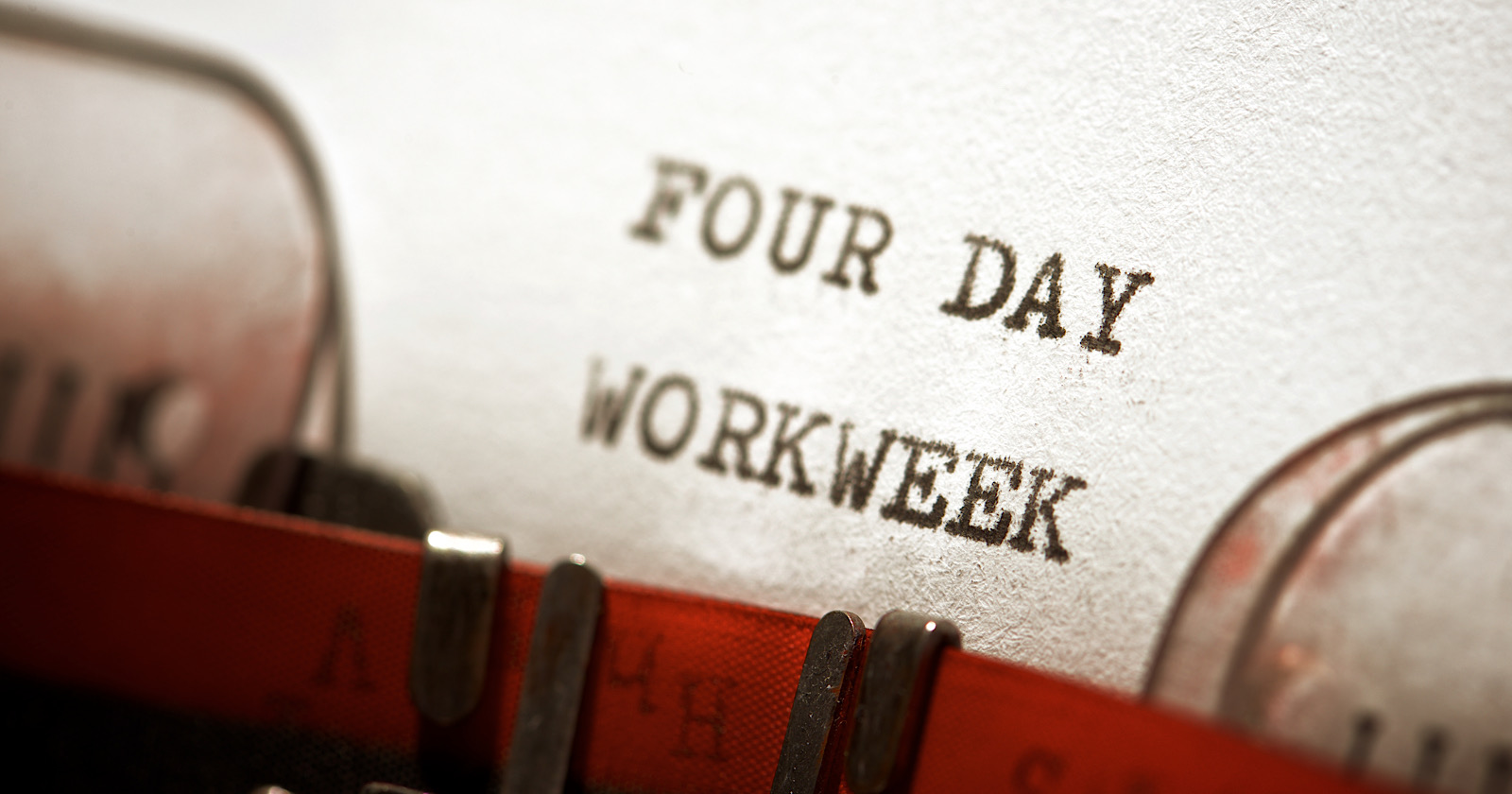I have an abnormal nostalgia for a phenomenon from my grad school days known as “Thirsty Thursday.”
The combination of evening classes on Thursdays and no classes on Fridays led to the MBA Students’ Association enacting a weekly … well, Thirsty Thursday. We were tired. We were ready for a break. We were parched.
So when the opportunity presented itself for Thursday night to mark the start of the weekend again, I was intrigued.
Obviously, the four-day workweek (4DWW) isn’t about Thirsty Thursday. It’s not even about kicking off the weekend one day earlier. Not even close. It’s about putting a laser-sharp focus on operational excellence. In other words: shedding light on a company’s inefficiencies and doing something about them. (A terrifying prospect, I know.)
When we set out to trial the 4DWW, we knew from the start that this wouldn’t be an exercise in working longer hours during the workdays we had left. Nor would it be about doing less work. We would adopt the program’s “100/80/100 rule”: 100% productivity with 80% of the time, all while maintaining 100% pay.
Understandably, this freaked a few people out.
What were we thinking? We already had an arguable excess of deadlines. And now we had one less day to meet them? Please.
It would never work if we didn’t have total buy-in. And that was the beauty of kicking this off on a trial basis: If it were a failure, then, well, we would learn something. We’d know it wasn’t for us. And, if we did it right, we’d find out where there was a true excess of work – that is, work we could toss. (Yes – another terrifying prospect.)
As it turns out, experimenting with a four-day workweek will reveal a lot about boundaries – especially with a global workforce representing several time zones. When working to uncover inefficiencies in our workflows, we had to answer many questions. Questions like:
Can this wait until tomorrow (or Monday)?
Am I interrupting this person’s offline or focus time?
Does this need to be a meeting, or can it be done asynchronously?
Is this urgent?
As it turns out – everyone has different answers to those questions. As my Bubbe would say, “Oy vas mir.”
Even more questions arose from the ones that were already nebulously answered. Should we experiment with a no-meetings model? Should we use different channels other than Slack during offline hours? But whose offline hours are we talking about – the employees in Idaho or the ones in Manila?
It did not bode well for 100% buy-in.
I’ll let you in on a secret: Your team is just as savvy as you are (if not, more so), especially when it comes to their own projects, experiences, and challenges. In our case, that’s why it made sense to let our staff take the wheel and cultivate a genuinely safe space, without executives, to address the challenges of this particular experiment.
It didn’t take long for our staff-led committee to discover ways for all of us – leadership included – to find ways to be more productive, and better define and honor boundaries while doing it. We had tools at our fingertips, like async meetings, Slack statuses, video messaging, and the ability to schedule messages and emails in advance. We just had to figure out the best way to use them.
And that was just the first step.
We experimented with canceling all meetings for a month. Then, we only added back the ones we truly missed and needed. In many cases, that meant replacing former live meetings with asynchronous ones and, for some, eventually removing them altogether. We created an anonymous form for anyone to make suggestions and give feedback to the committee. With all our staff did to make the 4DWW successful, wouldn’t you know? We now had a springboard for answering some of those other lingering questions.
Spoiler alert: We got buy-in. We have no plans to go back to the five-day workweek. SEJ has maintained 100% productivity and learned to thrive in a 4DWW. I know I have.
Looking at the outcomes of this experiment, it’s hard to say which spoke the loudest volumes. And it wasn’t just about identifying places where we could “work smarter, not harder.” Our results aligned with the global ones in that our teams are experiencing a better sense of work-life balance. That might be where I observed the greatest impacts and takeaways.
First and foremost: Burnout is real. In a way, it’s a “silent killer” in that conventional wisdom says we must power through our work, no matter what.
I believe this experiment taught us that premise is simply false. Make no mistake: Our shared dedication to our work is palpable, as is our commitment to SEJ’s success. But the past several months have forced many of us, for many reasons, to take a hard look at our priorities. Sometimes that’s meeting an ebook deadline or chasing the best news story. But sometimes, it has nothing to do with work. We know now that powering through has limits and that when we’re at risk for burnout, we’re not primed for success. Is it always that deep? We learned that, sometimes, the answer is “no.”
That led to another key takeaway: We can say “no” to things and still not just maintain, but gain productivity. Some of my colleagues noted, for instance, how many fewer meetings they have now than they did before the experiment. When we notice ourselves getting dangerously close to excess, we now have the experience to know when to cut back or go asynchronous. And we’ve learned how to make that meeting-free time more focused, thanks to boundaries we’ve learned to set. “I’m working on a deadline right now; I’ll be back online around 1 P.M. EST, but if this is urgent, send me an SMS!” Slack statuses for the win, indeed.
And the third takeaway: The people working here are very cool, multi-dimensional human beings. They write books. They grow delicious-looking vegetables. They throw great parties. They go on amazing road trips. When you give people more room to be themselves, you also give them room to do their best work. It’s been wonderful and fascinating to see how people use this redefined sense of time and, more so, how each is individually making it work for them.
That’s perhaps the greatest takeaway: Adopting a four-day workweek will look different for every company.
There’s something I like to call “the facial effect.” After a cosmetic facial, many people break out with pimples and blemishes. That results from things being cleared on the skin’s surface, encouraging what’s beneath it to emerge. Adopting a four-day workweek is akin to that; it leads to the facial effect for many. It certainly did for us – and we couldn’t be more grateful.
My advice to companies considering a four-day workweek is an enthusiastic “Do it.” But expect the unexpected. Expect the facial effect. And know that no company can fix every inefficiency. The world simply moves too fast, and to err is human. But every company can afford at least a bit of this introspection and get a common understanding of things like, “What is a work emergency?” or, “Do I/you/they need to be in that meeting?”.
So. Here’s to the new and improved Thirsty Thursday – the one where we ask the tough questions, listen more than speak, and understand that the road to better productivity never really ends, but that you can do profoundly excellent work along the way. Cheers.
Featured Image: WINDCOLORS/Shutterstock





